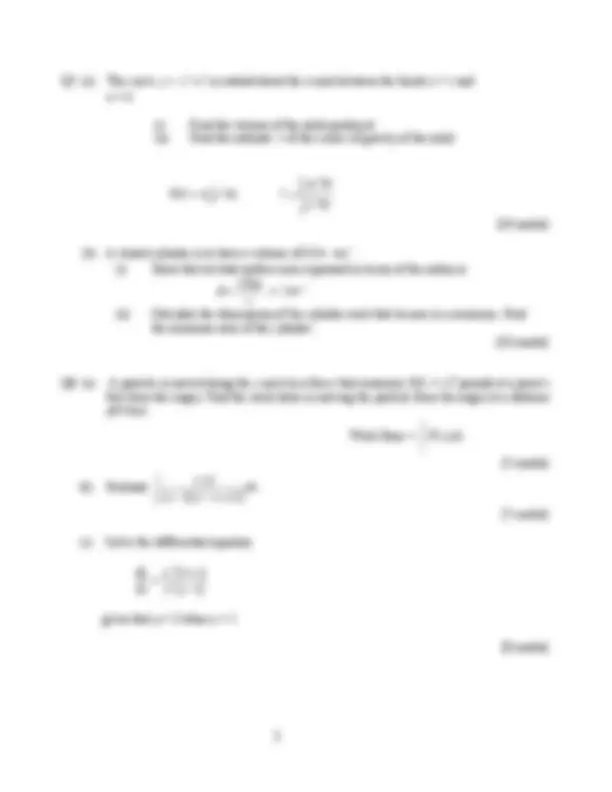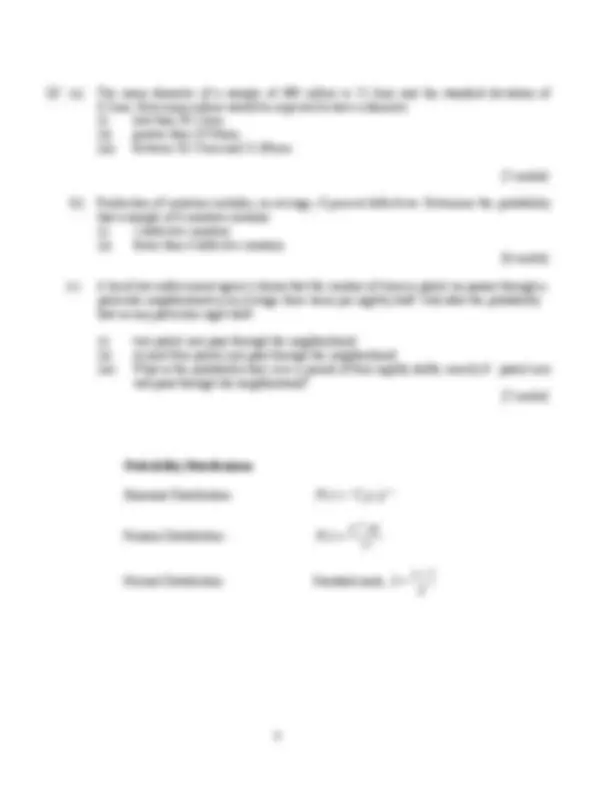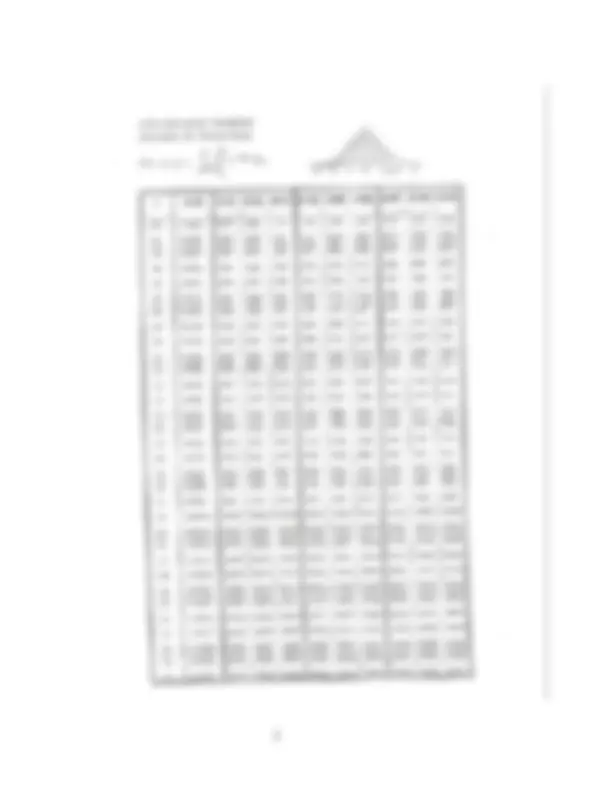





Study with the several resources on Docsity

Earn points by helping other students or get them with a premium plan


Prepare for your exams
Study with the several resources on Docsity

Earn points to download
Earn points by helping other students or get them with a premium plan
Community
Ask the community for help and clear up your study doubts
Discover the best universities in your country according to Docsity users
Free resources
Download our free guides on studying techniques, anxiety management strategies, and thesis advice from Docsity tutors
The instructions and questions for a mechanical engineering exam held at cork institute of technology in summer 2006. The exam covers topics such as calculus, differential equations, and statistics, and includes both parametric and non-parametric integrals. Students are required to answer five questions within three hours.
Typology: Exams
1 / 5

This page cannot be seen from the preview
Don't miss anything!




(NFQ Level 6)
Instructions Answer FIVE questions
Examiners: Ms. J. English Dr. D. Cremin Mr. J. Connolly Mr. R. Simpson
Q1. (a) Find the general solution of
dy dx
for the parametric equations x = 5(3 + cos θ)and
y = 2 ( 3 θ −sin θ). Find
dy dx
[7 marks]
(b) A function is described by the equation 2 x^3 − y^3 − 3 xy^2 = 6. Find
dy dx
for the
function at any point and in particular at the point (1,3).
[6 marks]
(c) Show that the function f ( ) x = x^3 + 3 x^2 − 4 x − 6 = 0 has a root between x=1 and x=2.Use three iterations of the Newton-Raphson method to find the root correct to two decimal places. [7 marks]
Q2. (a) Given z = -5x^3 + 2x^2 y+6y^3 find
z z x y
and
2 2
z x
[6 marks]
(b) In the formula
4 3
4 E v D h
= , E is subject to an error of -1.5 %, h is subject to an
error of 3% and v is subject to an error of -0.4%. Use a calculus method to find the approximate percentage error in D.
[8 marks]
(c) Locate the turning points on the curve y = 2x^3 -12x 2 +18x-8 and establish whether they are maximum or minimum points.
[6 marks]
Q3. Determine each of the following integrals:
(i)
(^3 )
1
x x dx − x^ x
(ii)
5 2 4 2
x dx x x
(iii)
2 0
.cos(4 ) 3
x x dx
π
[20 marks]
Q4. (a) Find the position of the centroid of the figure bounded by the curve y = x^2 –5x, the x-axis, the y-axis and the ordinate at x = 2 and x= 4.
b
a b
a
X
xydx
ydx
=
b
a b
a
Y
y dx
ydx
=
[8 marks]
(b) Calculate the area bounded by the curve y = x^2 – 4 between the limits x = -2 and x = 4.
[6 marks] (c) Find the root mean square of the function y = 3 – 2x over the interval 1 ≤ x ≤ 4
[6 marks]
Q7. (a) The mean diameter of a sample of 400 rollers is 21.2mm and the standard deviation of 0.5mm. How many rollers would be expected to have a diameter (i) less than 20.12mm. (ii) greater than 19.94mm. (iii) between 20.27mm and 21.69mm.
[7 marks]
(b) Production of resistors includes, on average, 8 percent defectives. Determine the probability that a sample of 6 resistors contains: (i) 2 defective resistors. (ii) fewer than 3 defective resistors. [6 marks]
(c) A local law enforcement agency claims that the number of times a patrol car passes through a particular neighborhood is on average three times per nightly shift. Calculate the probability that on any particular night shift
(i) two patrol cars pass through the neighborhood (ii) at most four patrol cars pass through the neighborhood (iii) What is the probability that, over a period of four nightly shifts, exactly 8 patrol cars will pass through the neighborhood? [7 marks]
Probability Distributions
Binomial Distribution: P r ( ) = n^ C p qr r^ n − r
Poisson Distribution:
e m^ mr P r r
Normal Distribution: Standard units,
x X Z